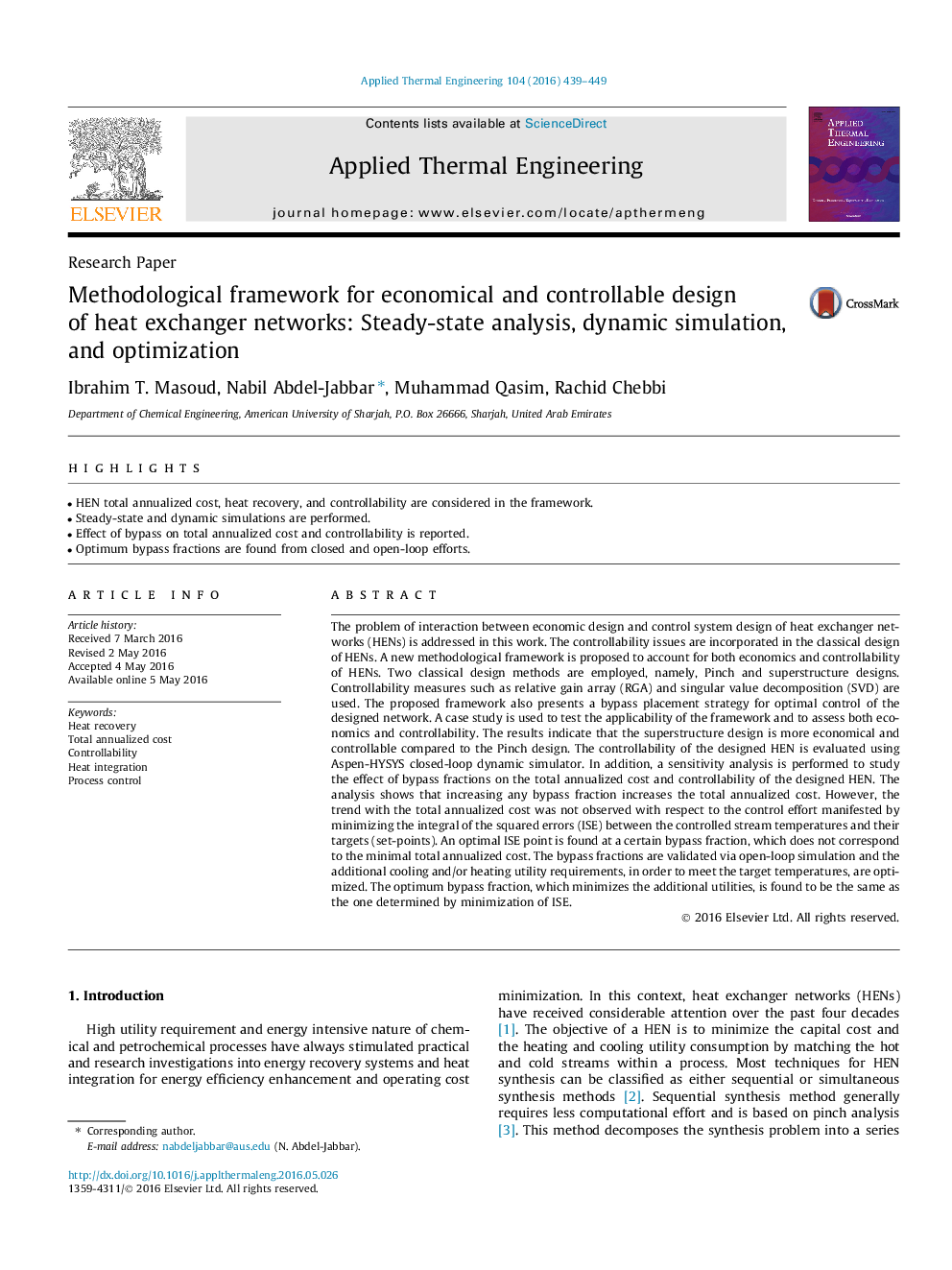| کد مقاله | کد نشریه | سال انتشار | مقاله انگلیسی | نسخه تمام متن |
|---|---|---|---|---|
| 644517 | 1457124 | 2016 | 11 صفحه PDF | دانلود رایگان |
• HEN total annualized cost, heat recovery, and controllability are considered in the framework.
• Steady-state and dynamic simulations are performed.
• Effect of bypass on total annualized cost and controllability is reported.
• Optimum bypass fractions are found from closed and open-loop efforts.
The problem of interaction between economic design and control system design of heat exchanger networks (HENs) is addressed in this work. The controllability issues are incorporated in the classical design of HENs. A new methodological framework is proposed to account for both economics and controllability of HENs. Two classical design methods are employed, namely, Pinch and superstructure designs. Controllability measures such as relative gain array (RGA) and singular value decomposition (SVD) are used. The proposed framework also presents a bypass placement strategy for optimal control of the designed network. A case study is used to test the applicability of the framework and to assess both economics and controllability. The results indicate that the superstructure design is more economical and controllable compared to the Pinch design. The controllability of the designed HEN is evaluated using Aspen-HYSYS closed-loop dynamic simulator. In addition, a sensitivity analysis is performed to study the effect of bypass fractions on the total annualized cost and controllability of the designed HEN. The analysis shows that increasing any bypass fraction increases the total annualized cost. However, the trend with the total annualized cost was not observed with respect to the control effort manifested by minimizing the integral of the squared errors (ISE) between the controlled stream temperatures and their targets (set-points). An optimal ISE point is found at a certain bypass fraction, which does not correspond to the minimal total annualized cost. The bypass fractions are validated via open-loop simulation and the additional cooling and/or heating utility requirements, in order to meet the target temperatures, are optimized. The optimum bypass fraction, which minimizes the additional utilities, is found to be the same as the one determined by minimization of ISE.
Journal: Applied Thermal Engineering - Volume 104, 5 July 2016, Pages 439–449
